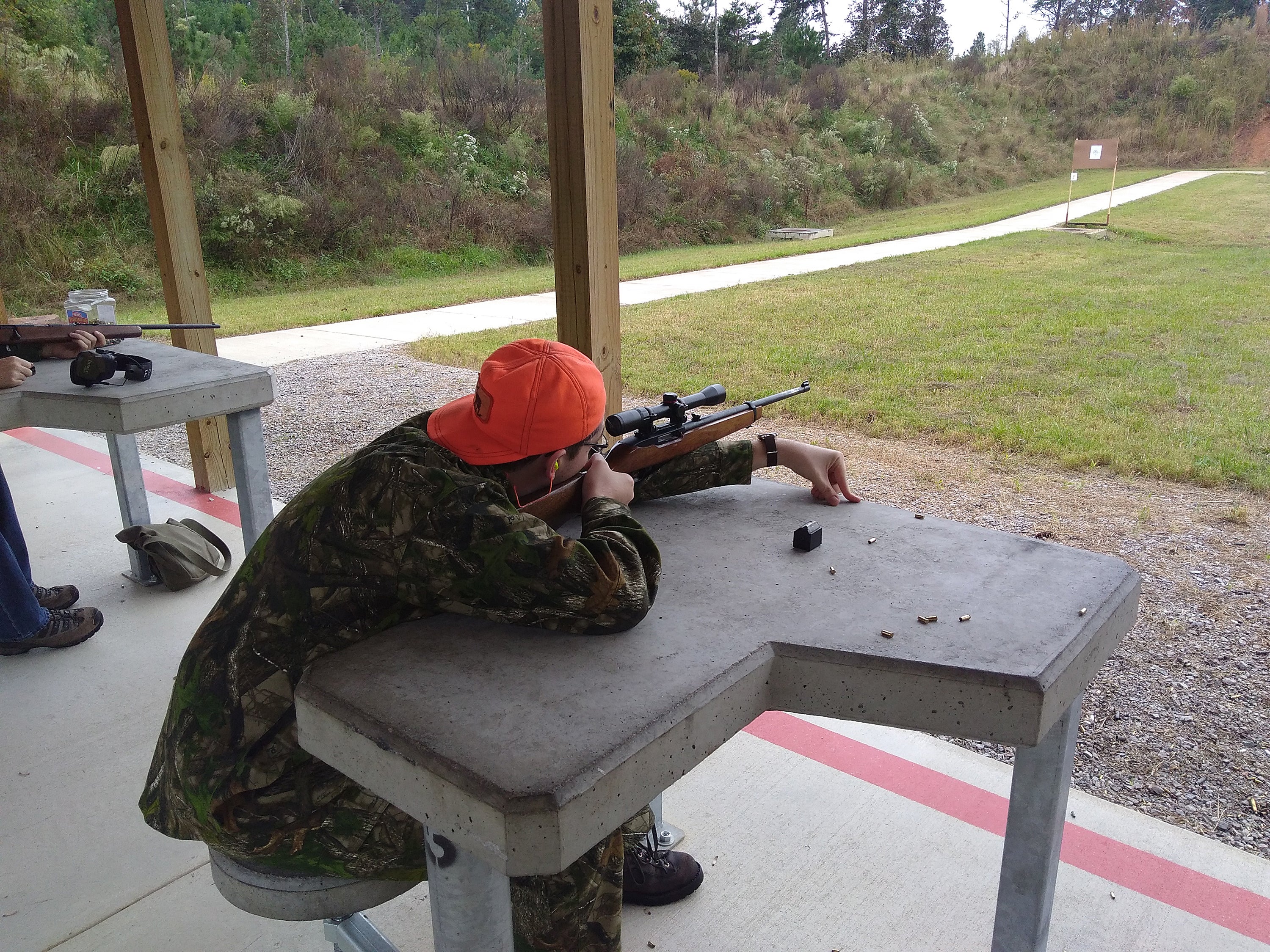By DAVID RAINER, Alabama Department of Conservation and Natural Resources
Alabama hunters deserve a roaring round of applause for their safety awareness. Not only did hunters complete the 2021-2022 hunting seasons without any hunting-related fatalities, a first for Alabama since accidents started being recorded in 1974, they also repeated the phenomenal achievement with no hunting-related fatalities for the 2022-2023 seasons.
“Two years in a row, is that not great news?” said Captain Marisa Futral of the Law Enforcement Section for the Alabama Department of Conservation and Natural Resources’ (ADCNR) Wildlife and Freshwater Fisheries (WFF) Division. Futral also serves as the WFF Hunter Education Coordinator. “I hope we were able to accomplish that because people are paying more attention to treestand safety, making sure their children are taking hunter education classes, making sure all the equipment is working properly and everything is in good working condition before they climb.”
Chuck Sykes, WFF Director, applauded all those involved in promoting hunter education and safe hunting across Alabama.
“It hasn’t been too long ago that it seemed impossible to have a season without a hunting fatality,” Sykes said. “So two in a row is incredible. The WFF Hunter Education, marketing and R3 (Recruit, Retain, Reactivate) staffs have worked hard to remind the hunting public about hunting and firearms safety. Apparently, it’s working. Let’s shoot for three.”
Futral said she hopes the younger generation will become enthralled with all that the outdoors has to offer, including hunting. She has seen some indications that could be happening.
“We’re seeing children taking the hunter ed course whose parents haven’t taken a hunter ed course,” she said. “I think the children are coming around and telling their parents what they need to do to be safe. You know, a lot of people in Alabama are grandfathered in. That could be part of it. We’ve also seen a lot of kids coming to hunter ed and dragging their parents who have never hunted with them. That’s interesting.”
The Alabama Legislature passed a law in 1992 that made hunter education mandatory to be able to purchase a hunting license to try to reduce the number of accidents. Anyone born before August 1, 1977, was grandfathered in and is exempt from the hunter ed requirement. The Alabama Wildlife Heritage Act of 2007 provides a mentor provision for hunter education. Hunting license buyers have the option to hunt under the "supervision required" status in lieu of passing the hunter education course. However, successful completion of an approved hunter education course is mandatory for all non-supervised hunting license buyers. Hunters under supervision must be under normal voice control, not to exceed 30 feet away from a properly licensed hunter 21 years of age or older. The supervising person cannot be the holder of a "supervision required" license.
Futral said the number of youths who are taking hunter education courses is steady at about 13,000 a year, and the number of overall hunting licenses sold is around 300,000.
During the 2022-2023 season, four non-fatal firearms accidents and 15 non-fatal treestand accidents occurred.
“Last year we had fewer non-fatal firearms accidents than the year before, but our treestand accidents went back up,” Futral said. “Although the accidents were non-fatal, we want to get those folks to focus more on safety.
“The ones who are falling while climbing, if they would have their safety harness attached to the tree, that would solve that. And when you’re climbing into a shooting house, make sure you have three points of contact, either two hands and one foot or two feet and one hand.”
The reasons cited for last season’s 15 treestand accidents were:
- Stand fell on victim
- Improper assembly of ladder stand
- Fell while moving stand
- Fell while getting into climbing stand
- Fell while descending
- Overloaded rated weight of the stand
- Improper assembly of ladder stand to tree
- Stand not secured properly to tree
- Fell while climbing into position
- Fell while repositioning
- Fell while climbing into shooting house
- Fell while standing up to shoot
- Fell while climbing into stand as straps broke
- Fell while settling into stand
- Fell while adjusting tree saddle







